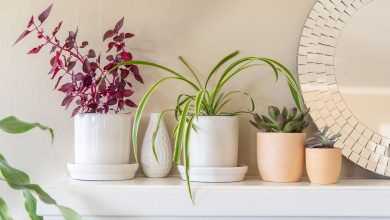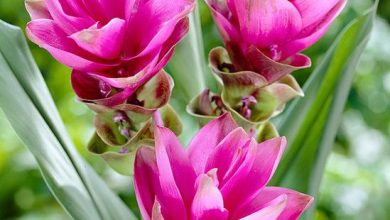Feng Shui Plants: How and Where to Put Plants in Your Home
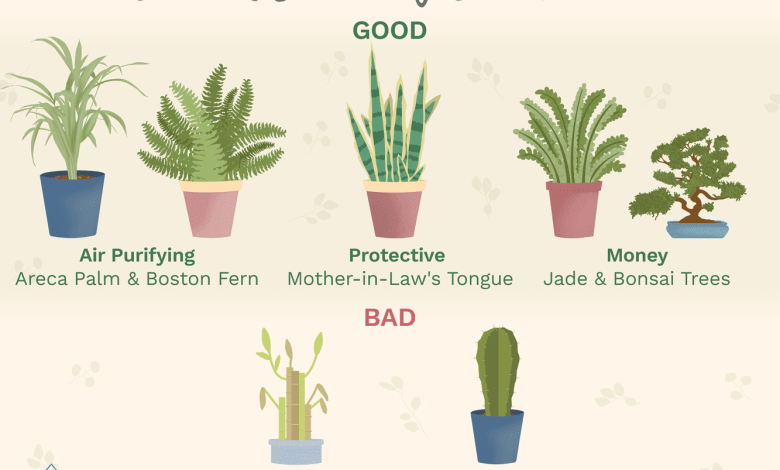
 Some experts say that indoor pollution is oftenmuch worse than outdoor pollution.
Some experts say that indoor pollution is oftenmuch worse than outdoor pollution.
This is why Feng shui asks us to always keep in mind the quality of the indoor air and to do everything possible to improve it. In that sense, indoor plants can be an important tool to help us activate positive energy in our home, while purifying the air.
Now, many think that lucky bamboo is the only feng shui friendly houseplant, but there are actually many options that can fit into our living spaces. Here’s everything you need to know to add Feng shui -friendly plants to your home.
When are the most suitable conditions to add a new plant to my home?
The best time to add a new plant is at the beginning of a new month or in the new year, when it symbolizes a healthy start.
How are plants used in Feng Shui?
Plants symbolize growth, life, and abundance and are associated with the wood element. When placed together with other elements – earth, water, fire and metal – it nourishes and balances the ambient Chi
There are four main ways to use plants in feng shui:
- To counter negative energy. Place your plants one meter away from your computer to filter out electromagnetic energy.
- To connect with nature. The plants soften straight lines and angles, in addition to simulating the feeling of being in nature, where everything curves and flows. Choose plants with round leaves rather than those with thorns or many branches.
- To counteract the tight spaces afforded by low ceilings. Place tall plants in the corners of rooms to help offset the cramped feel.
- To balance the water element. Use plants in bathrooms and laundry areas to symbolically “dry up” excess water and balance the room.
Where to locate them?
wood is theenergy of health, family and creative expansion.It is worn down by fire, destroyed by metal, and nourished by water.
Therefore, its orientation is East and Northeast.
Depending on the environment, the cardinal orientation and the type of energy you need to set in motion, the recommendations for locating your plants are as follows:
Living room
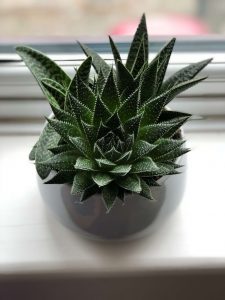 Plants that like the sun in abundance and with a lot of resistance are required.
Plants that like the sun in abundance and with a lot of resistance are required.
Located to the North they promote transcendence, while to the Northeast they favor finances and prosperity.
In the East its orientation corresponds to health and family.
balconies and windows
When located here, plants protect from negative energies that come from outside.
front door
It is recommended to place a plant on each side of our main entrance. The best thing is that they are plants with healthy foliage and colorful flowers, which help filter the energy that enters the home.
However, we must be careful that the vegetation does not obstruct the passage.
Corridors and halls
As they are places of transit, the plants in these spaces help to balance the circulation of energy, while giving it warmth.
Kitchen
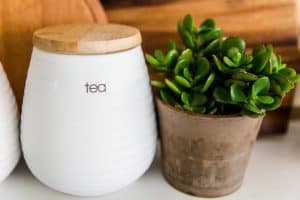 They are located between fire and water, to nourish and heal, and to increase the Yang energy of space which, being a fire element, is nourished by wood.
They are located between fire and water, to nourish and heal, and to increase the Yang energy of space which, being a fire element, is nourished by wood.
Toilets
Plants that adapt to the humidity of the bathroom are recommended, to balance the water element.
Bedrooms
According to Feng Shui, plants and flowers should not remain in the bedroom overnight, as they absorb oxygen and produce carbon dioxide, interfering with the quality of our rest and health.
Some considerations
Aspects to take into account when doing Feng Shui with Plants:
- Vigorous plants activate energies linked to advancement, whether intellectual, physical, spiritual or economic. Likewise, they help filter negative energies.
- The use of plants should not be excessive, as this tends to radiate Toxic energy.
- Succulents are hardy and activate the energy of abundance.
- If the cacti have thorns, they should only be used outside the house, as protection.
- Climbers can rob other plants of sunlight, as well as «smother» our walls. Its use should be moderate.
- Hanging plants are recommended, as long as their appearance is not languid, as this energy is descending and radiates negativity and lack of momentum to move forward. They must be pruned and guides placed so that they adopt a more upright and voluminous appearance.
- Those with elongated pointed leaves emit hostile energy and cause conflicts, so their use is only recommended outdoors.
- Plants with round or oval leaves are the most recommended for use indoors, according to Feng shui.
If the plants bear flowers, they should be located as follows:
- North/Northwest/Southeast: red, fuchsia, orange, yellow.
- South/Northeast: white, light blue.
- East: light blue, lilac, violet.
- West/Southwest: white, yellow, orange.
Recommended Feng Shui Plants
Philodendron
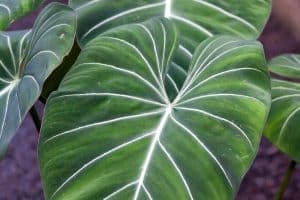 It grows well indoors. Its heart-shaped leaves represent the Fire element that can add energy to a dark or cold area.
It grows well indoors. Its heart-shaped leaves represent the Fire element that can add energy to a dark or cold area.
Spathiphyllum
It grows well indoors. It produces white flowers, making it ideal for office settings.
ficus
The ficus is one of the most widespread indoor plants, because it adapts well to high temperatures and low light and humidity conditions. A large ficus can be used to divide rooms or to raise a low ceiling.
common ivy
 According to Feng Shui, they help soften negative energies in the bedroom or at work.
According to Feng Shui, they help soften negative energies in the bedroom or at work.
african violet
The rounded leaves of this plant resemble coins and thus symbolize wealth.
Rhapis excelsa
It is one of the best feng shui plants to improve indoor air quality. Ideal for beginners, as it is very easy to grow.
Dracaena Deremensis
This is another attractive plant that does well in very low light. It is ideal for removing chemical toxins in the home or office.
robust ficus
Also called elastic or rubber ficus, it tolerates dim light and cold temperatures. In addition, it has an excellent ability to remove toxins from the air of any indoor environment.
Plants not recommended in Feng shui
Bonsai represent an energy whose growth has been stunted and project the idea of limitation.
Dried flowers are also not favorable because their Chi has already died.


